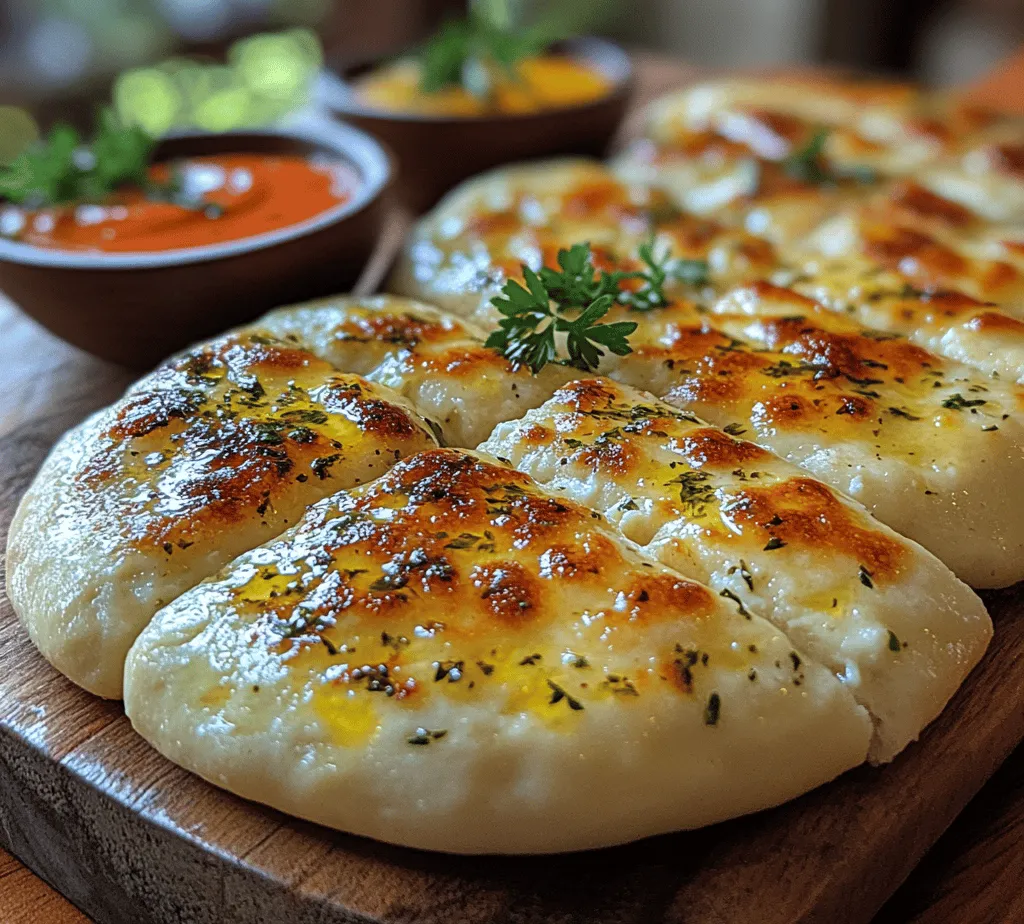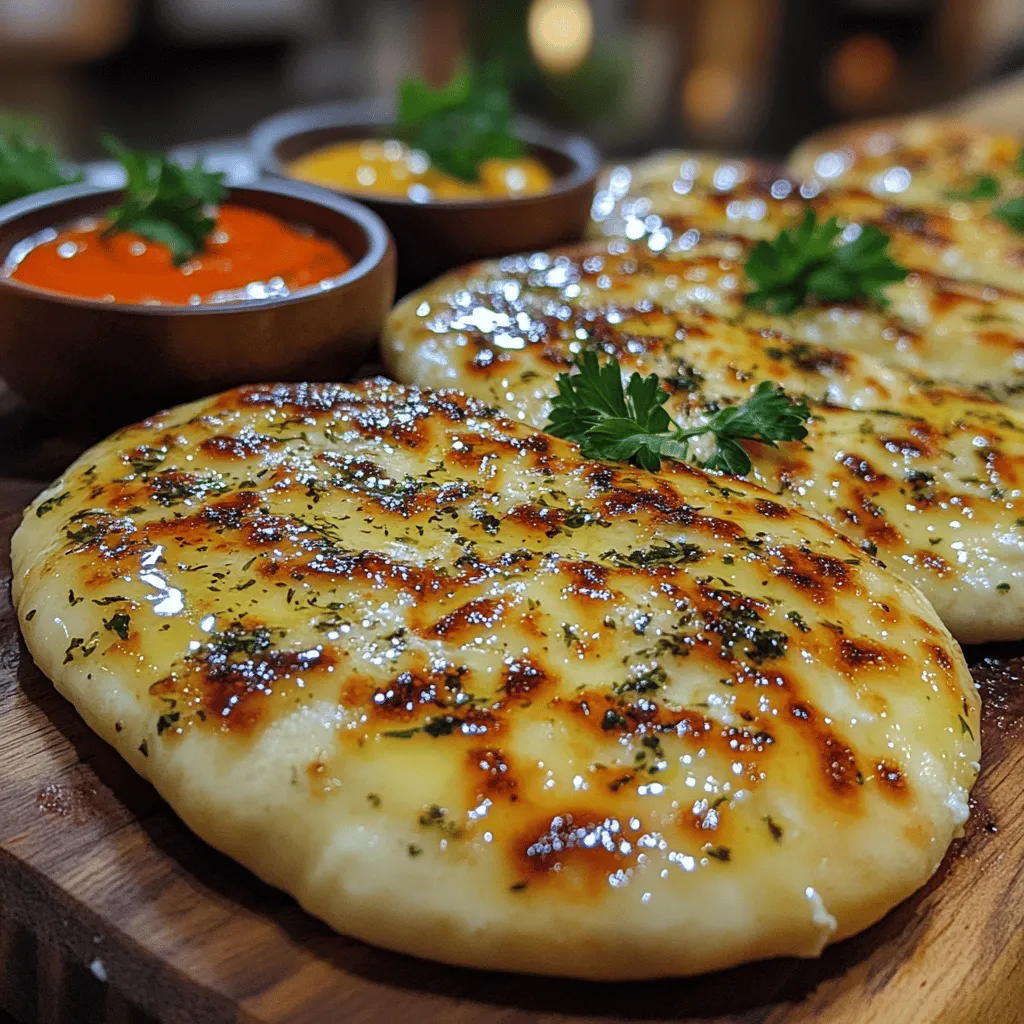Introduction
Cottage cheese flatbread is a delightful and versatile dish that caters to those seeking gluten-free options without compromising flavor or texture. This recipe is perfect for anyone looking to enjoy a soft, savory bread that can be served in various ways, whether as a side dish, a wrap, or even as a base for a delicious meal. The creamy richness of cottage cheese not only enhances the flavor profile but also contributes significantly to the flatbread’s unique texture. Moreover, the ease of preparation makes it an ideal addition to your meal repertoire, whether you’re a busy parent, a culinary novice, or simply someone who loves to cook.
In this article, we will explore the ingredients that make this flatbread a standout, delve into the preparation process, and share various serving suggestions that will elevate your dining experience. From breakfast to dinner, the possibilities with cottage cheese flatbread are endless, and we’re excited to embark on this culinary journey with you.
Understanding the Ingredients
Exploring Cottage Cheese
Cottage cheese is the star ingredient in our flatbread recipe, bringing a wealth of nutritional benefits that make it a fantastic choice for health-conscious eaters. It’s low in fat, high in protein, and packed with essential vitamins and minerals, making it an excellent addition to a balanced diet. The creamy texture of cottage cheese translates beautifully into the flatbread, providing moisture and softness that other flours alone cannot achieve.
When selecting cottage cheese for this recipe, opting for small curd varieties is preferable. Small curd cottage cheese tends to blend more smoothly into the batter, ensuring a finer texture in the finished product. This type of cottage cheese has a mild flavor that complements the other ingredients without overpowering them, allowing for a harmonious balance in each bite.
Gluten-Free All-Purpose Flour
For those who are gluten-sensitive or simply prefer to avoid gluten, using a gluten-free all-purpose flour is essential in this recipe. The choice of gluten-free flour can significantly impact the final texture and taste of the flatbread. One crucial component in gluten-free baking is xanthan gum. This ingredient acts as a binding agent, compensating for the absence of gluten and providing the necessary structure to the flatbread.
When selecting a gluten-free flour blend, it’s helpful to understand the differences between various types. For instance, blends that combine rice flour, potato starch, and tapioca flour often yield the best results. These ingredients work together to mimic the elasticity and chewiness typically provided by wheat-based flours. Additionally, using gluten-free options opens the door to a range of health benefits, including improved digestion and reduced inflammation, making it a wise choice for many individuals.
The Role of Eggs
Eggs play a pivotal role in this cottage cheese flatbread recipe, contributing to both the structure and moisture of the final product. They help bind the ingredients together, creating a cohesive batter that holds its shape when cooked. Moreover, eggs enhance the overall richness of the flatbread, resulting in a tender and flavorful outcome.
For those following an egg-free diet or looking for alternatives, several substitutes can be used without compromising the integrity of the flatbread. Common egg replacements include flaxseed meal mixed with water, applesauce, or mashed bananas. Each of these options brings its own unique flavor and texture, allowing for customization according to dietary preferences.
Herbs and Seasonings
To elevate the flavor profile of your cottage cheese flatbread, incorporating herbs and seasonings is essential. Garlic and onion powder serve as foundational seasonings, providing a savory depth that enhances the overall taste. These ingredients are particularly beneficial when preparing flatbread that will be used as a base for flavorful toppings or spreads.
Additionally, fresh herbs such as parsley, dill, and chives can transform the flatbread into a vibrant and aromatic dish. Not only do these herbs add a burst of flavor, but they also offer nutritional benefits, including antioxidants and vitamins that contribute to overall health. As you become more comfortable with the recipe, feel free to experiment with different herbs and spices to tailor the flatbread to your personal preferences.
Step-by-Step Recipe Guide
Combining Ingredients for the Batter
Now that we’ve explored the essential ingredients, let’s dive into the preparation process. The first step in creating your cottage cheese flatbread is to combine the ingredients to form the perfect batter. Achieving the right consistency is crucial for a successful outcome.
1. Gather Your Ingredients: Start by measuring out your cottage cheese, gluten-free all-purpose flour, eggs, and any herbs or seasonings you plan to use. Having everything ready in advance will streamline the mixing process.
2. Mix the Cottage Cheese: In a large mixing bowl, add the cottage cheese. Use a fork or a hand mixer to break down any large curds, ensuring a smooth consistency. This step is vital for achieving a uniform batter that cooks evenly.
3. Incorporate the Eggs: Crack the eggs into the bowl with the cottage cheese and whisk them together until fully combined. The mixture should be creamy and smooth, with no visible streaks of egg.
4. Add the Gluten-Free Flour: Gradually sprinkle the gluten-free all-purpose flour into the mixture. It’s essential to add the flour slowly to prevent lumps from forming. Use a spatula or wooden spoon to gently fold the flour into the wet ingredients until fully incorporated.
5. Adjust Consistency: At this stage, you should check the batter’s consistency. It should be thick yet pourable, resembling a pancake batter. If the mixture seems too thick, you can add a splash of water or milk (dairy or non-dairy) to loosen it slightly.
6. Incorporate Seasonings: Now it’s time to enhance the flavor of your batter. Add the garlic and onion powder, along with any fresh herbs you’ve chosen. Mix carefully to ensure even distribution throughout the batter.
7. Avoiding Lumps: To achieve a lump-free batter, consider using a whisk or an immersion blender for a few seconds. This step can help create a smoother mixture, making the cooking process easier and the final product more enjoyable.
With the batter prepared, you’re ready to move on to cooking your cottage cheese flatbread. The next steps will guide you through the cooking process, ensuring that your flatbread turns out perfectly golden and delicious. Look forward to exploring various ways to serve this delightful dish, as the possibilities are endless!

Cooking the Flatbread
When it comes to cooking your cottage cheese flatbread, achieving the right pan temperature is crucial for optimal results. A properly heated pan ensures that the flatbread cooks evenly, allowing for a perfect texture. Preheat your skillet or griddle over medium heat for about 5 minutes. You can check whether the pan is ready by sprinkling a few drops of water onto its surface; if they dance and evaporate quickly, you’re good to go.
Greasing Options: Olive Oil vs. Cooking Spray
The choice of greasing method can significantly affect the cooking process. Olive oil is a fantastic option for greasing your pan. It not only prevents sticking but also adds a subtle flavor to the flatbread. To grease the pan with olive oil, simply pour a small amount into the center, then use a spatula or paper towel to spread it evenly across the cooking surface.
Alternatively, cooking spray can be a convenient choice, especially for quick clean-up. However, be mindful that not all cooking sprays are created equal; some contain additives that could alter the flavor of your flatbread. If you prefer to stick with clean ingredients, opt for a non-stick spray that’s free from propellants and artificial flavors.
Techniques for Spreading the Batter Evenly
Once your batter is ready, it’s time to get it onto the heat. Use a ladle or measuring cup to pour the batter into the center of your preheated pan. To spread the batter evenly, gently tilt the pan in a circular motion, allowing the batter to flow to the edges. Alternatively, you can use a spatula to assist in spreading, ensuring a uniform thickness across the flatbread. Aim for a thickness of about 1/4 inch for the perfect balance of soft interior and crispy exterior.
Flipping and Browning
Signs to Look For When Determining When to Flip
Knowing when to flip your flatbread is key to achieving that desired golden-brown crust. Watch for bubbles forming on the surface of the flatbread; once they begin to pop, it’s a sign that the underside is cooking well. You should also notice a slight firmness when gently pressing down on the surface. Typically, the first side will take about 3-4 minutes to cook, but keep a close eye on the color and texture.
Achieving the Perfect Golden-Brown Crust
Once you’re ready to flip, use a wide spatula to carefully lift the flatbread. If the first side is a lovely golden-brown, it’s time to cook the other side. Allow it to cook for an additional 2-3 minutes. For a truly perfect crust, you can brush a little olive oil on the top before flipping to encourage browning.
Managing Cooking Times for Best Results
Cooking times can vary based on your stove and the thickness of your batter. It’s essential to adjust accordingly. For thicker flatbreads, you may need to lower the heat slightly to ensure the center cooks through without burning the exterior. Conversely, if your flatbread is cooking too slowly, slightly increase the heat but remain vigilant to avoid scorching.
Serving Suggestions
Creative Ways to Enjoy Cottage Cheese Flatbread
Cottage cheese flatbread is incredibly versatile, making it a delightful addition to various meals. You can enjoy it as a standalone snack, smeared with a bit of butter or olive oil. Alternatively, consider using it as a base for toppings like avocado, sliced tomatoes, or smoked salmon, combining flavors for a delicious open-faced sandwich.
Pairing with Dips, Soups, and Fillings
If you’re looking for an easy appetizer or side, serve your flatbread with dips like hummus, tzatziki, or a spicy bean dip. The soft texture of the flatbread complements these dips beautifully. For a heartier meal, pair your cottage cheese flatbread with a warm bowl of soup, such as tomato basil, lentil, or minestrone. The flatbread can be used to scoop up the soup, enhancing the overall dining experience.
Ideas for Incorporating Flatbread into Various Meals
Incorporate your flatbread into breakfast, lunch, or dinner. For breakfast, top it with a fried egg and sprinkle some fresh herbs for a nutritious start to your day. For lunch, use the flatbread to wrap around grilled vegetables, chicken, or turkey for a satisfying meal. In the evening, serve it alongside grilled meats or roasted vegetables as a healthy side.
Nutritional Information
Caloric Breakdown
Estimating the calories per serving of cottage cheese flatbread can vary based on the specific ingredients you use. Generally, if you divide the flatbread into four servings, each piece will contain approximately 120-150 calories. The exact number will depend on factors like the amount of cottage cheese, the type of flour used, and the quantity of oil for greasing.
Macro and Micronutrient Profile of the Ingredients
In terms of macronutrients, cottage cheese flatbread is rich in protein, thanks to the cottage cheese. A serving often contains around 8-10 grams of protein, making it an excellent choice for those looking to increase their daily intake. The carbohydrates mainly come from the flour, while the healthy fats can be attributed to the olive oil used for cooking.
Micronutrients are also important; cottage cheese is a good source of calcium, essential for bone health, and contains B vitamins that support energy metabolism.
Health Benefits of Cottage Cheese Flatbread
Low-Calorie Alternative to Traditional Bread
Cottage cheese flatbread is a fantastic low-calorie alternative to traditional bread options, appealing to those watching their caloric intake. It’s particularly beneficial for individuals who are gluten-sensitive or looking for gluten-free options, as it can be made with gluten-free flour substitutes such as almond flour or oat flour.
Protein Content and Its Benefits for Muscle Maintenance
One of the standout features of cottage cheese is its high protein content. The inclusion of cottage cheese in this flatbread not only adds moisture and flavor but also provides essential amino acids necessary for muscle repair and growth. This makes it an ideal choice for those who lead an active lifestyle or are looking to maintain muscle mass.
Gluten-Free Advantages for Sensitive Individuals
For individuals who are sensitive to gluten, cottage cheese flatbread is a welcome addition to their meals. It provides a satisfying texture and taste without the discomfort that gluten-containing products can cause. By using gluten-free flour, you can enjoy this recipe while adhering to dietary restrictions without compromising on taste or enjoyment.
Conclusion
Cottage cheese flatbread offers a delicious and healthy alternative to conventional bread, perfect for those adhering to a gluten-free lifestyle or anyone looking to incorporate more nutritious options into their diet. With its simple preparation and versatility in serving, this flatbread is not only a satisfying choice but also a delightful way to enjoy wholesome ingredients. Whether as a side dish, a base for sandwiches, or simply enjoyed on its own, this recipe is sure to become a favorite in your kitchen.
By exploring various cooking methods, serving suggestions, and nutritional benefits, you can appreciate the full potential of cottage cheese flatbread. Try it out today, and discover how this versatile recipe can elevate your meals while supporting your health and wellness goals.

